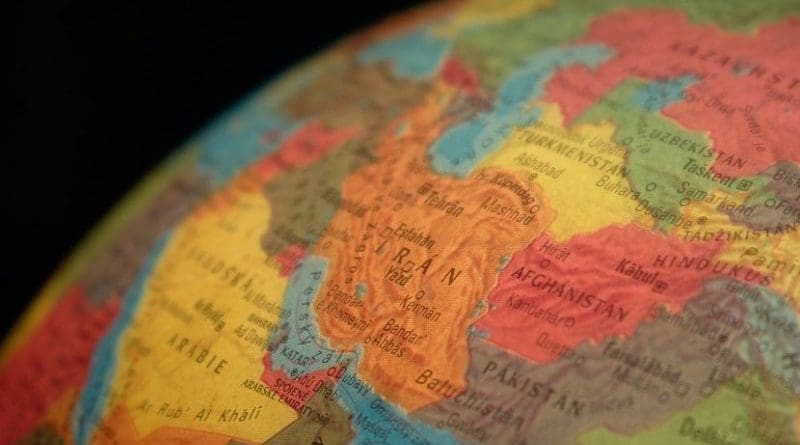Iran Opens New Sectarian Front In Afghanistan – OpEd
By Arab News
By Dr. Abdel Aziz Aluwaisheg*
The Iranian newspaper Jomhouri Islami on Monday revealed that a pro-Iran militia had been set up in Afghanistan. The revelation coincides with the ongoing US troop withdrawal from the country and bodes ill for its security and stability. According to the paper, the new group is called, oddly using Arabic, “Hashd Al-Shi’i” (Shiite Mobilization). It did not use a Farsi, Dari or Pashtun name, but curiously borrowed from the Arabic name of Iraq’s umbrella outfit, Al-Hashd Al-Sha’abi, for a number of militias. It is also curious that it explicitly used the word for the Shiite sect in the name of the group; something that Tehran has carefully avoided in the past. The newspaper is a conservative mouthpiece, founded by Ali Khamenei in 1979.
Afghan officials were quick to denounce this development. Qasem Vafaizadah, the head of the Afghan Ministry of Information and Culture, said on Monday: “With this kind of conspiracy, Iran is making the war in Afghanistan more complicated by provoking the people and creating security threats, but this fire will also burn Iran.” Vafaizadah stressed: “There is no room in Afghanistan for such mercenary groups who act as foreigners’ puppets.” Shah Hossein Mortazavi, senior adviser to Afghan President Ashraf Ghani, said that Afghanistan will not suffer the same fate as Syria, Yemen, Iraq and Lebanon, and that Iran’s “sedition” will fail.
Iran sees America’s departure as an opportunity to expand its influence in Afghanistan, using a security vacuum in the country to expand its military footprint eastward. In April, Foreign Minister Javad Zarif welcomed the planned US withdrawal, describing it as a “positive move,” making Iran one of the few entities to welcome the premature departure. However, Zarif also warned against the resulting “vacuum” and a “new war in Afghanistan.”
Zarif is probably right about the security vacuum and the potential for a renewed civil war in Afghanistan. However, Tehran could work with the authorities in Kabul and with its neighbors to help the country maintain its stability. This week’s news indicates that it has chosen a different approach, akin to the role it has played in Iraq, Syria, Lebanon and Yemen, by exploiting sectarian divisions, sometimes of its own making.
Since the US invasion of Afghanistan in 2001, Iran has made fighting American influence and interests in the country a major cause, supporting groups opposed to the US presence. Iran has supported, for example, Al-Qaeda, local Afghan groups and its own proxies to undermine US interests, without confronting American and NATO forces directly. More importantly, Iran’s meddling in Afghanistan has undermined the Kabul government’s efforts to maintain peace, security and stability in the country, hence this week’s quick and angry response from Afghan officials.
Initially, Iran’s intervention in Afghanistan — or the export of its revolution to the country — mainly took the form of recruiting Afghans from within Afghanistan and, significantly, from the Afghan refugee community in Iran to help turn the tide in the 1980-88 war against Iraq. About 3,000 Afghan fighters were killed in that war. The Islamic Revolutionary Guard Corps’ (IRGC) Quds Force was assigned the task of exporting the revolution and training the foreign recruits. After the end of the Iraq war in 1988, the Afghan fighters were decommissioned, sent back to Afghanistan or later mobilized for the new fronts Iran opened in Iraq and Syria.
The Fatemiyoun Brigade terrorist group is the best known of the Iran-backed Afghan mercenaries fighting in Syria. Iranian officials try to distance themselves from the group, but it is common knowledge that these mercenaries were recruited, trained, armed and funded by Tehran. Their numbers are not known exactly, but are estimated to be between 5,000 and 30,000 (the former is the figure suggested by Iran). In January 2018, a Fatemiyoun official said that 2,000 of his group had been killed in Syria and more than 8,000 wounded, indicating that the total strength of the group is much larger than Iran claims.
Iran has a pool of more than 3 million refugees from which to recruit fighters. It has used that pool before and has the potential to deploy larger numbers of fighters back into Afghanistan. It has already redeployed about 3,000 Fatemiyoun fighters from Syria to Afghanistan.
In a December 2020 TV interview, Zarif suggested the Fatemiyoun fighters could help the fight against Daesh in Afghanistan. “They are the best forces with a military background in the fight against Daesh,” he said, proposing that the Afghan government enlist their support, but his suggestion was denounced by Kabul. Probably all sides in Afghanistan would oppose the deployment of the notorious Fatemiyoun Brigade or any other Iran-backed group, for fear they would be sectarian-based. Their presence would only inflame intra-communal fighting.
In addition to the new sectarian militia, Tehran has been bolstering its military deployments along the Iran-Afghanistan border since the beginning of the US troop withdrawal. IRGC forces and heavy military equipment, as well as air force assets, are being redeployed to the border, augmenting regular troops and border guards. The new military posture would enable Iran to take offensive action inside Afghanistan once the American withdrawal is completed by Sept. 11.
The newly announced group is probably a cover for the Fatemiyoun Brigade terrorist outfit and could be used to spearhead any Iranian offensive into Afghanistan, similar to its role in Syria, for example.
With the inauguration of President-elect Ebrahim Raisi scheduled to take place on Aug. 5, the hard-line president may want to establish his revolutionary bona fides by attacking Afghanistan. As Raisi enjoys the support of the supreme leader and the radical Majlis, he would face no objections to the attack. An attack on the Shiite minority in Afghanistan would provide a convenient pretext.
- Dr. Abdel Aziz Aluwaisheg is the GCC Assistant Secretary-General for Political Affairs & Negotiation. The views in this piece are personal and not necessarily those of the GCC. Twitter: @abuhamad1

